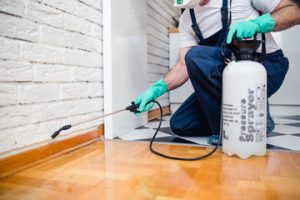Basement Remodeling Contractor requires a lot of technical knowledge. From framing walls to installing outlets and lighting, a qualified contractor knows how to frame your project around the vision you share.

Whether you’re looking to build an entertainment space, home office, or guest suite, each goal has different design, plumbing, and code implications. Find a contractor who is licensed, insured, and has a good track record.
Basement remodeling is one of the most important home improvements that a homeowner can make. It can dramatically increase the value of a property and transform a dreary, underused space into a stylish living area. However, it’s crucial to choose the right contractor for the job. A professional contractor will have the experience to complete the project quickly and efficiently, while minimizing disruptions. They’ll also be familiar with city regulations and building codes. In addition, a reputable contractor will have a solid reputation for quality work and customer satisfaction.
Experienced contractors understand how to maximize the space in a basement. They’ll be able to advise you on the best layout for your project and recommend ways to improve functionality, efficiency, and aesthetics. In addition, they’ll be able to handle complex tasks such as waterproofing, HVAC installation, and structural changes.
Choosing a contractor with extensive basement remodeling experience can help you save time and money on your renovation project. These professionals will be able to provide you with a comprehensive estimate and timeline for the project, including any potential unforeseen expenses. This will allow you to budget for these expenses and avoid unexpected delays in your construction schedule.
A reputable basement contractor will have established relationships with suppliers and subcontractors in the industry. This allows them to negotiate better prices for materials and fixtures, which they can pass on to their clients. They’ll also be able to provide expert advice on basement finishing and remodeling, including the best materials for your budget and goals.
Hiring a qualified and experienced York Basement Remodeling contractor is essential for any residential renovation project. This type of contractor will be able to handle all aspects of the renovation process, from design consultation to final walkthrough. They’ll be able to ensure that your basement renovation meets local standards and building codes, while maximizing the value of your property. They’ll also be able to handle any complex tasks, such as plumbing, electrical, and flooring installation. This will prevent costly mistakes and ensure that your basement remodel is done right the first time.
Permits
Basement finishing is popular with homeowners seeking extra space to accommodate a home office, entertainment area, bedroom, or guest room. However, turning your bare concrete and support columns into a comfortable living space requires meeting specific building codes for the new rooms to be considered safe and usable. This includes complying with fire safety standards, egress requirements, and plumbing for water and wastewater.
A reputable contractor will know what permits are required for your specific renovation and obtain them before beginning the work. They’ll also understand the importance of a written contract, including the scope of work, timeline, materials to be used, payment terms, dispute resolution clause, and warranties.
Before starting any major basement work, your contractor should first evaluate your septic system to determine whether it can safely serve the new living spaces and if you need to upgrade or replace it. In addition, they’ll make sure to address moisture control to prevent mold and mildew from forming in the basement. Framing and drywall will be constructed and installed to create the walls and ceilings for your newly designed basement. Plumbing and electrical will be installed, and flooring will be chosen and installed. A contingency fund should be incorporated into your budget to cover any unexpected costs that may arise during the remodeling process.
Depending on the type of rooms you’re creating, there may be additional requirements like installing fire-resistant materials and ensuring that the septic system is properly equipped to handle the load. If you don’t get the proper permits and pass all the inspections, you could risk a fine, having to tear out your finished work, or even losing your house.
Skipping permits and inspections isn’t just illegal, it’s dangerous to your health and safety. The short-term savings and convenience of bypassing the permit process aren’t worth the risks for your home value, finances, and safety. The proper process safeguards your investment and protects you and your family. It also triggers inspections at various stages throughout your project, ensuring that your contractor is adhering to all building standards. For this reason, securing the correct permits isn’t just recommended—it’s essential for all residential work.
Insurance
A licensed basement remodeler carries liability insurance to offer protection in case of any damages caused during the renovation process. It is also a sign that they follow industry standards and adhere to local building codes. If you hired an unlicensed contractor and they cause damage, you may face difficulties when selling your home or be required to redo the renovations at additional cost.
A skilled contractor has in-depth knowledge of all aspects involved in the basement remodeling process, from framing to finishing. They stay updated with advancements in the field and utilize innovative solutions to transform your basement into a captivating space. Moreover, they use high-quality materials to ensure that your renovated basement lasts for many years to come.
Basement renovations are a popular project among homeowners. In fact, it is estimated that a basement remodel can add up to 20 percent to your property’s value and increase living area by up to 30 square feet. This makes it a great investment and a worthy addition to your home. However, you should be aware of certain risks and pitfalls when taking on this DIY project.
Choosing the right contractor starts with clearly communicating your goals and vision to potential remodelers. This includes establishing the specific purpose of the finished basement, whether it will be a family room, home office, or guest suite. A reputable contractor will ask you detailed questions to understand your vision and suggest design solutions that meet your needs.
They will also provide you with a well-drafted contract that clearly outlines the scope of work, materials, timeline, and payment terms. The contract should also include a dispute resolution clause and warranties to protect your investment.
Basement remodeling is a major undertaking that requires expert craftsmanship and careful planning to avoid costly mistakes. If you’re looking for a dependable and experienced contractor to take on your basement renovation, look no further than Third Space Builders. We’re licensed, insured, and backed by a stellar reputation for customer satisfaction. Contact us today to get started with a free basement consultation! We will assess your needs, offer expert advice, and help you select the perfect finishes.
Communication
The final outcome of your basement remodel will depend on a number of factors, including the quality and expertise of the contractors you choose. The contractor you hire should be able to effectively communicate with you throughout the process, answering your questions and keeping you updated on progress. This ensures that your vision for the finished space is achieved and that the project stays on schedule and within budget.
Effective communication is more than just exchanging information; it involves establishing a shared understanding of your goals, needs and expectations. Your contractor should be able to listen attentively and offer expert suggestions while also providing clear and transparent estimates that detail all costs involved in the renovation project. This allows you to make informed decisions and avoid any unexpected expenses.
Basement remodeling is a complex process that requires special skills and knowledge to transform an underused and dreary space into a functional and stylish home improvement. Hiring a professional basement contractor ensures that your project is completed on time and within budget, while ensuring the quality of work meets or exceeds your expectations.
Choosing the right contractor can help you achieve your basement remodeling dreams and increase the value of your home. When selecting a contractor, look for one with experience in completing basement renovations and an excellent reputation for quality craftsmanship. In addition, be sure to check for licensing and insurance.
When considering a basement finishing project, homeowners often find themselves torn between the allure of DIY projects and hiring a professional basement contractor. While DIY basement remodeling offers a sense of accomplishment and personal satisfaction, professional basement contractors are well-versed in the complexities of city permitting, moisture risks and building codes and can ensure a smoother, more seamless project for you and your family.




